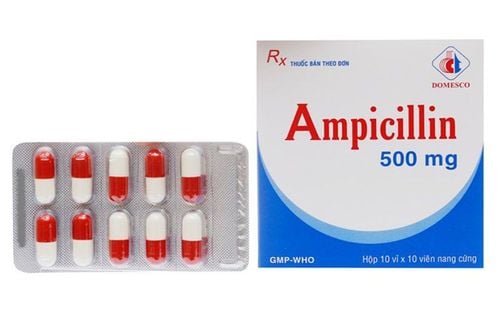Rodogyl is a combination of two antibiotics, spiramycin and metronidazole, commonly used in the treatment and prevention of oral infections. As a combination of two ingredients, it would easlily confuses patients with the recommended dosage. The following article will provide readers some information about the component of Rodogyl, dosage, and some notes when using Rodogyl.
1. What are available dosage of Rodogyl?
Rodogyl’s main ingredients are spiramycin and metronidazole. It’s a combination of spiramycin, an antibiotic of macrolide group and metronidazole, an antibiotic of nitro-5-imidazole aiming to treat oral infection. Therefore, Rodogyl is wellknown as Rodogyl dental antibiotic. Many patients are still wondering about its dosage. Some people said, Rodogyl is 125mg, some others think that it’s 750mg. However, Rodogyl are combination of 750 000 IU of spiramycin and 125mg of metrodinazole. Indications of Rodogyl include oral infection, acute or chronic, specifically:
- Tooth abscess
- Subcutaneous inflammation
- Gingivitis, stomatitis
- Pericoronitis
- Periodontitis
- Stenon duct’ inflammation or Wharton duct’ inflammation
- Infection control after oral surgery
2. Specific dosage of Rodogyl
2.1 Infection treatment
Adult:
Take 4 to 6 Rodogyl daily (from 3 to 4.5 million IU spiramycin and 500 to 750mg metronidazole), divided to 2-3 times/ day and after meal. In severe cases, you can take up to 8 pills per day
Children:
- From 6 to 10 years old: take 2 Rodogyl pills every day (1.5 million IU spiramycin and 250mg metronidazole).
- From 10 to 15 years old: take 3 Rodogyl pills everyday (about 2.25 million IU spiramcyin and 375mg metronidazole)
2.2 Local infection control after oral surgery
Adult:
Take 4 to 6 pills of Rodogyl everyday divided into 2-3 times and after meal
Children:
- From 6 to 10 years old: take 2 Rodogyl pills every day (1.5 million IU spiramycin and 250mg metronidazole).
- From 10 to 15 years old: take 3 Rodogyl pills everyday (about 2.25 million IU spiramcyin and 375mg metronidazole)
3. Contraindications for Rodogyl
Rodogyl is contraindication in the following situation:
- Oversensitive to imidazole group, spiramycin or any other ingredients
- Children below 6 years old as the tablets design are suitable.
4. Complications of Rodogyl
4.1 Complications of spiramycin
- Digestive system: stomachache, nausea, vomiting, diarrhea and rare cases of pseudomembranous colitis.
- Skin: Rash, itching, urticaria, Quincke's edema, anaphylactic shock (very rare). Acute generalized erythroderma (very rare)
- Central and peripheral nervous system: Occasionally patients may experience transient paresthesia.
- Hepatic symptoms: Interfered liver function test results (rare).
- Hematological: Some cases of hemolytic anemia have been reported with spiramycin (very rare).
4.2 Complication of metronidazole
- Digestive system: Common digestive disorders such as epigastric pain, nausea, vomiting, diarrhea. Glossitis, dry mouth, stomatitis, metallic taste in the mouth, loss of appetite. Pancreatitis may recover when treatment is stopped (very rare)
- Skin: Hot flashes, itching, rash, sometimes the patient has fever. Urticaria, Quincke's edema or more rarely anaphylactic shock.
- Central and peripheral nervous system: Headache, Peripheral neuropathy, Convulsions, dizziness.
- Psychiatric disorders: Confusion, hallucinations.
- Hematological effects: Occasionally, patients may experience neutropenia, agranulocytosis and thrombocytopenia.
- Hepatic symptoms: Rarely, patients may experience reversible liver dysfunction and cholestatic hepatitis.
Other effects may include: Reddish brown urine, due to water-soluble pigments from drug metabolism.
5. Note when using Rodogyl
- Avoid taking the drug with alcoholic beverages, as it may cause a disulfiram-like reaction.
- If a patient is suspected of having erythroderma pustulosis (symptoms of generalized erythema, fever, and pustules occurring at the beginning of treatment), treatment must be discontinued immediately and spiramycin must not be used in the future, either alone or in combination.
- Treatment with Rodogyl must be discontinued if the patient experiences symptoms of ataxia, dizziness, or confusion.
- Since Rodogyl contains metronidazole, thus, the risk of neurological deterioration in patients with severe, chronic, or progressive central or peripheral nervous system disease must be considered.
- Spiramycin is not recommended in patient lack of glucose-6-phosphate-dehydrogenase. Some of hemolytic anemia cases are reported in above patients.
- In patients with a history of hematological disorders and in patients receiving high doses and/or long-term treatment, regular blood counts should be performed. In case of leukopenia, continuation or -discontinuation of treatment with Rodogyl will depend on the severity of the infection.
- In cases requiring long-term treatment with Rodogyl, related sign for unwanted effect on central or peripheral nervous system should be follow, such as paresthesia, ataxia, dizziness, confusion, convulsions.
- There have been reports of increased activity of oral anticoagulants in patients receiving Rodogyl antibiotics. The severity of the infection, the age and general condition of the patient may be risk factors for this condition. In these cases, it is difficult to determine whether the infection or the treatment of the infection affects the INR. However, there are several groups of antibiotics commonly associated with this problem, particularly fluoroquinolones, macrolides, tetracyclines, cotrimoxazole, and some cephalosporin antibiotics.
- Driving and operating machinery: Patients should be warned about the risk of dizziness, confusion, hallucinations while taking Rodogyl and advised not to drive or operate machinery if these disorders occur.
- Pregnant women: Clinically, some studies analyzing cases of pregnancy exposed to metronidazole showed no teratogenic effects or toxication for fetus. Animal studies have not shown evidence of teratogenic effects of metronidazole. However, further epidemiological studies are needed to draw a firm conclusion. Therefore, pregnant women should only use the drug when prescribed by a doctor and understanding pros and cons.
- For spiramycin, spiramycin can be considered for use in pregnant women. Spiramycin during pregnancy has not shown teratogenic or fetal toxicity effects. In general, the drug can be used during pregnancy in crucial situation.
- Breastfeeding women: spiramycin and metronidazole are excreted in breast milk. Therefore, Rodogyl should not be used during breastfeeding.
- Overdose: There is currently no specific antidote for spiramycin and metronidazole. In case of overdose with Rodogyl, treatment is mainly symptomatic and supportive. In case of overdose of spiramycin, patients may experience gastrointestinal symptoms such as nausea, vomiting, diarrhea. Some cases of patients with prolonged QT interval that might be reduced along with discontinued treatment have been observed in neonates with high dose of spiramycin as well as IV spiramycin in subject with risk of QT inverval prolongation. Therefore, in term of spiramycin overdose, the QT interval should be checked especially in the present of other risk factors (hypokalemia, congenital QT prolongation, using drugs that prolong the QT interval). For metronidazole, cases with 1 dose up to 12g has been reported and the only symptoms was vomiting, ataxia and mild disoriented.
All in all, Rodogyl is a combination 750.000 IU spiramycin and 125mg metronidazole, antiobiotics which are commonly used in the treatment and prevention of oral infections. They can cause some undesired effects, often in digestive systems. Patients need to follow doctor’s instruction and dosage indicated.
To arrange an appointment, please call HOTLINE or make your reservation directly HERE. You may also download the MyVinmec app to schedule appointments faster and manage your reservations more conveniently.








